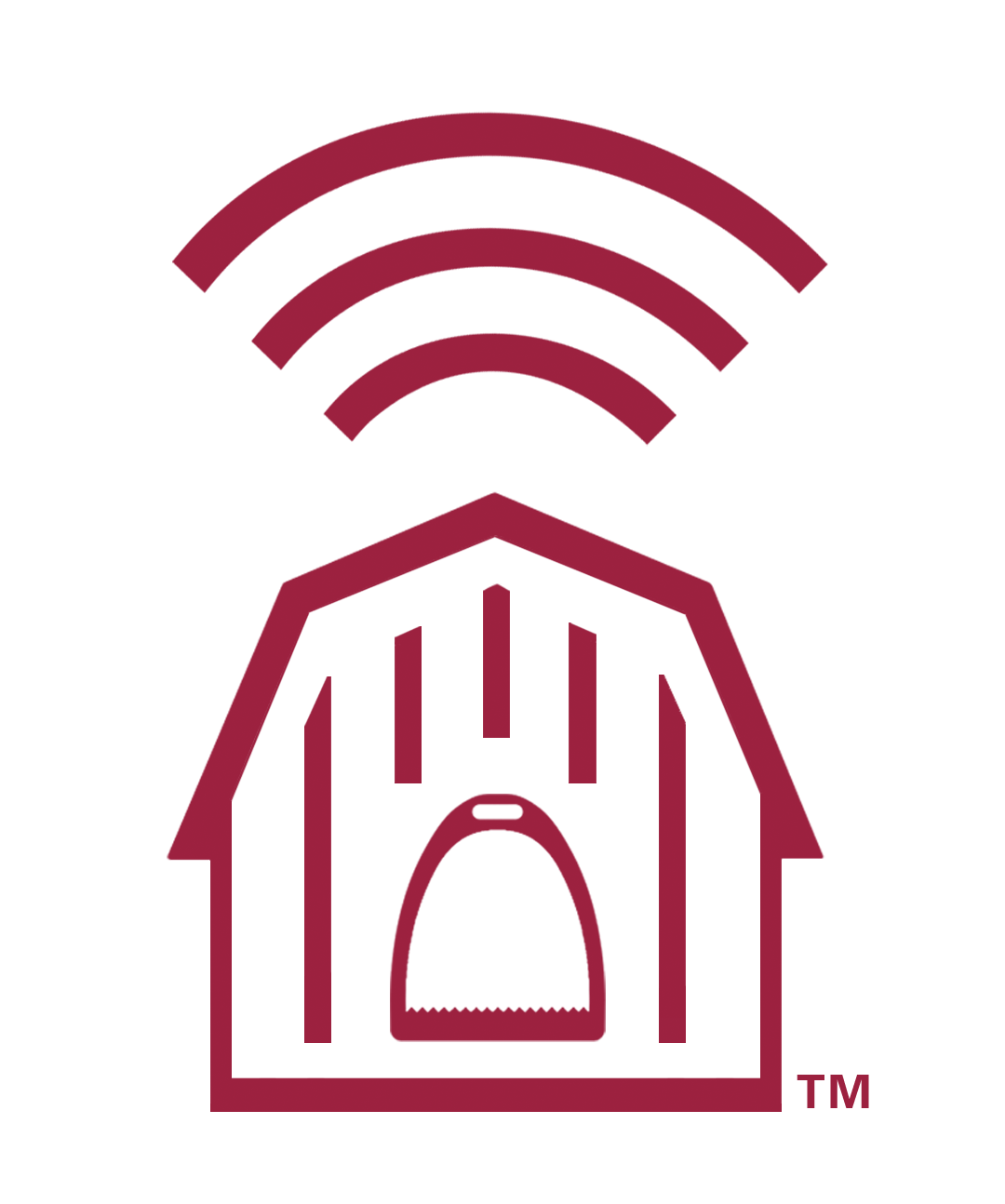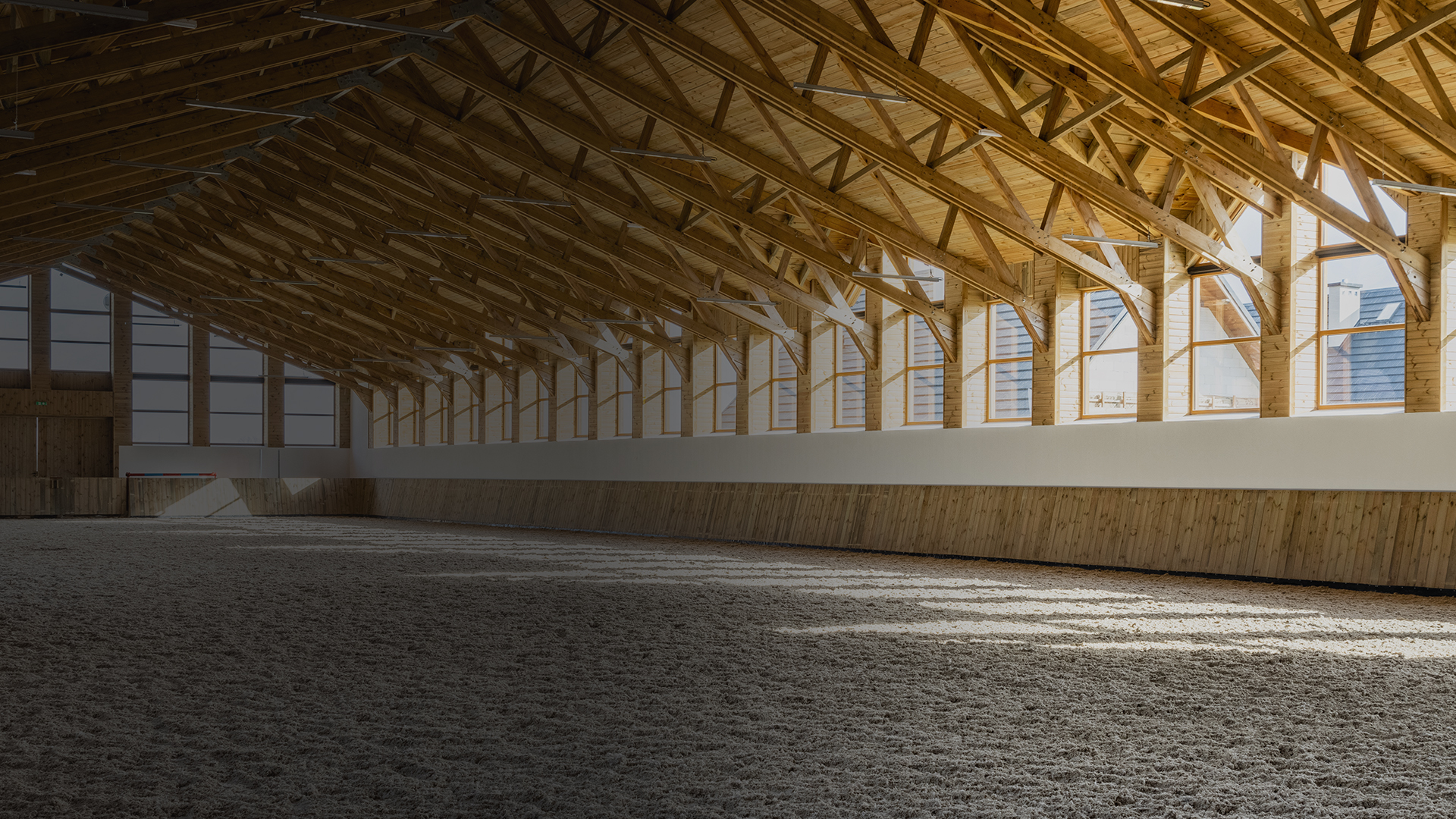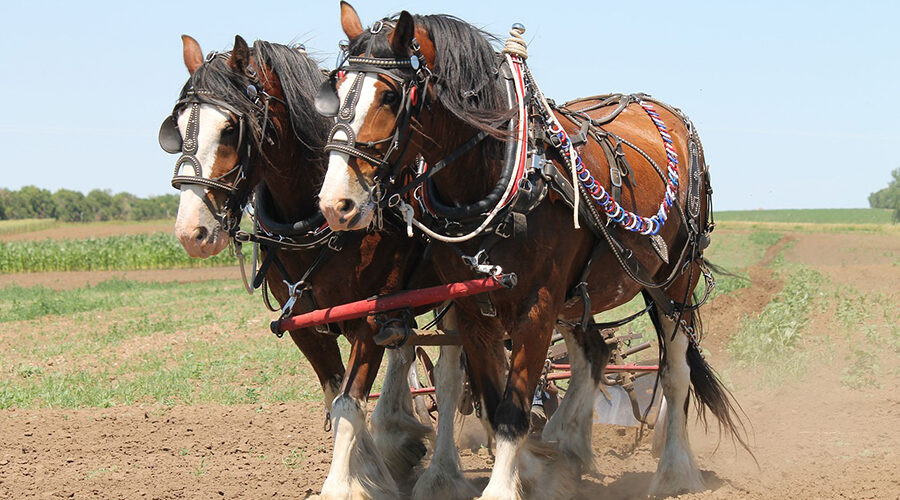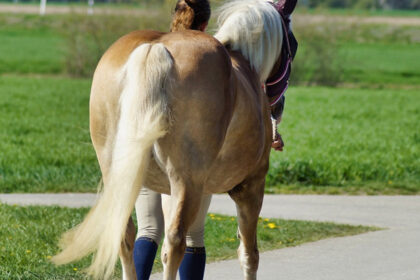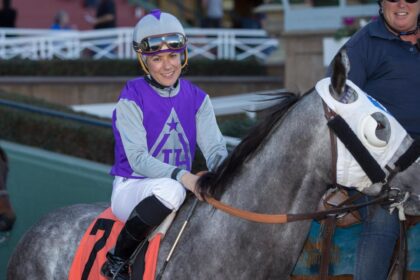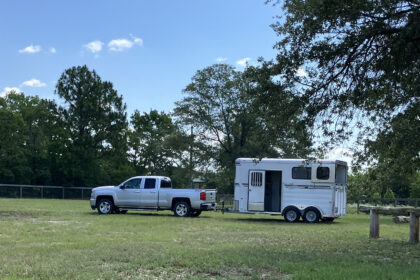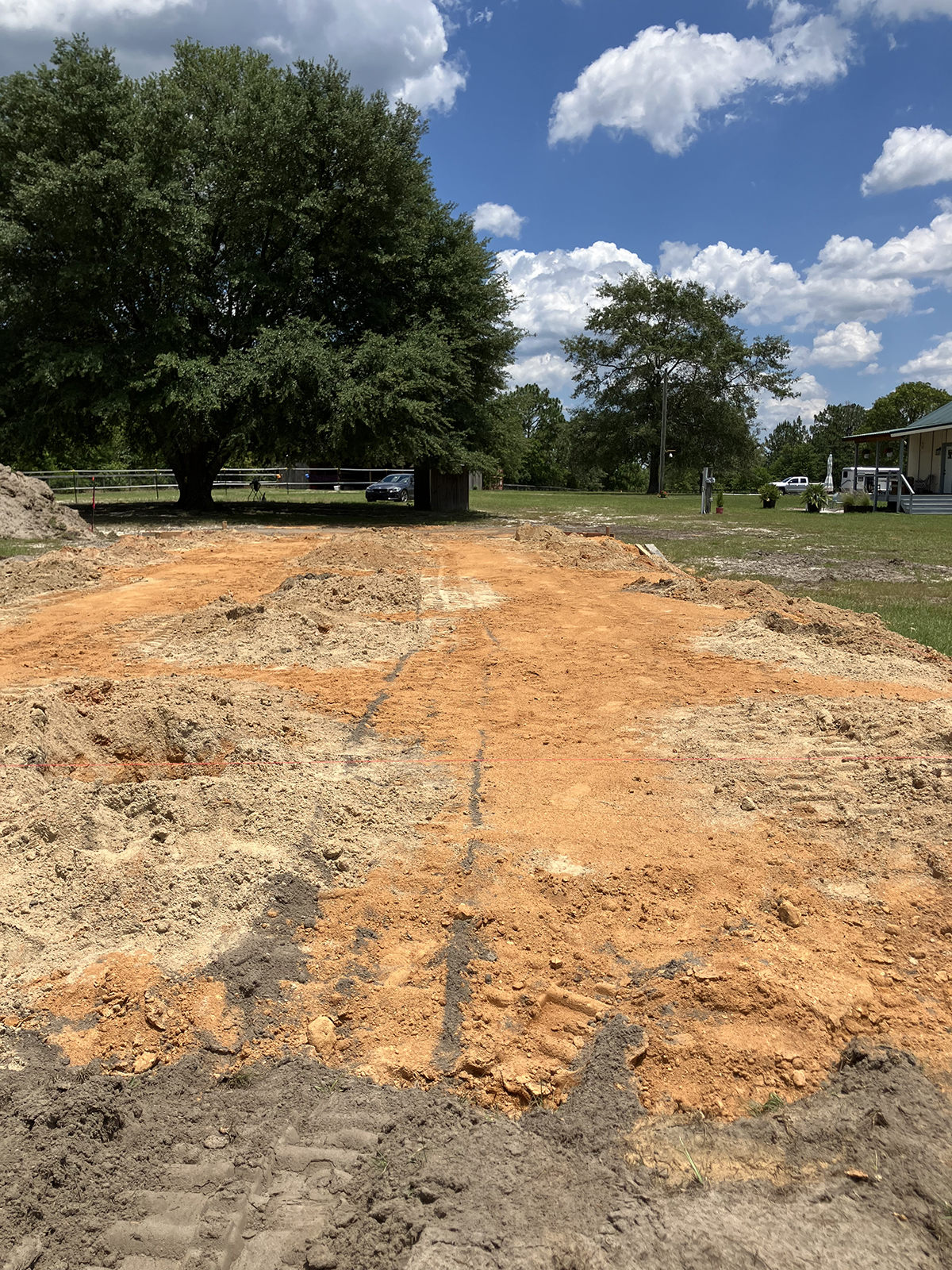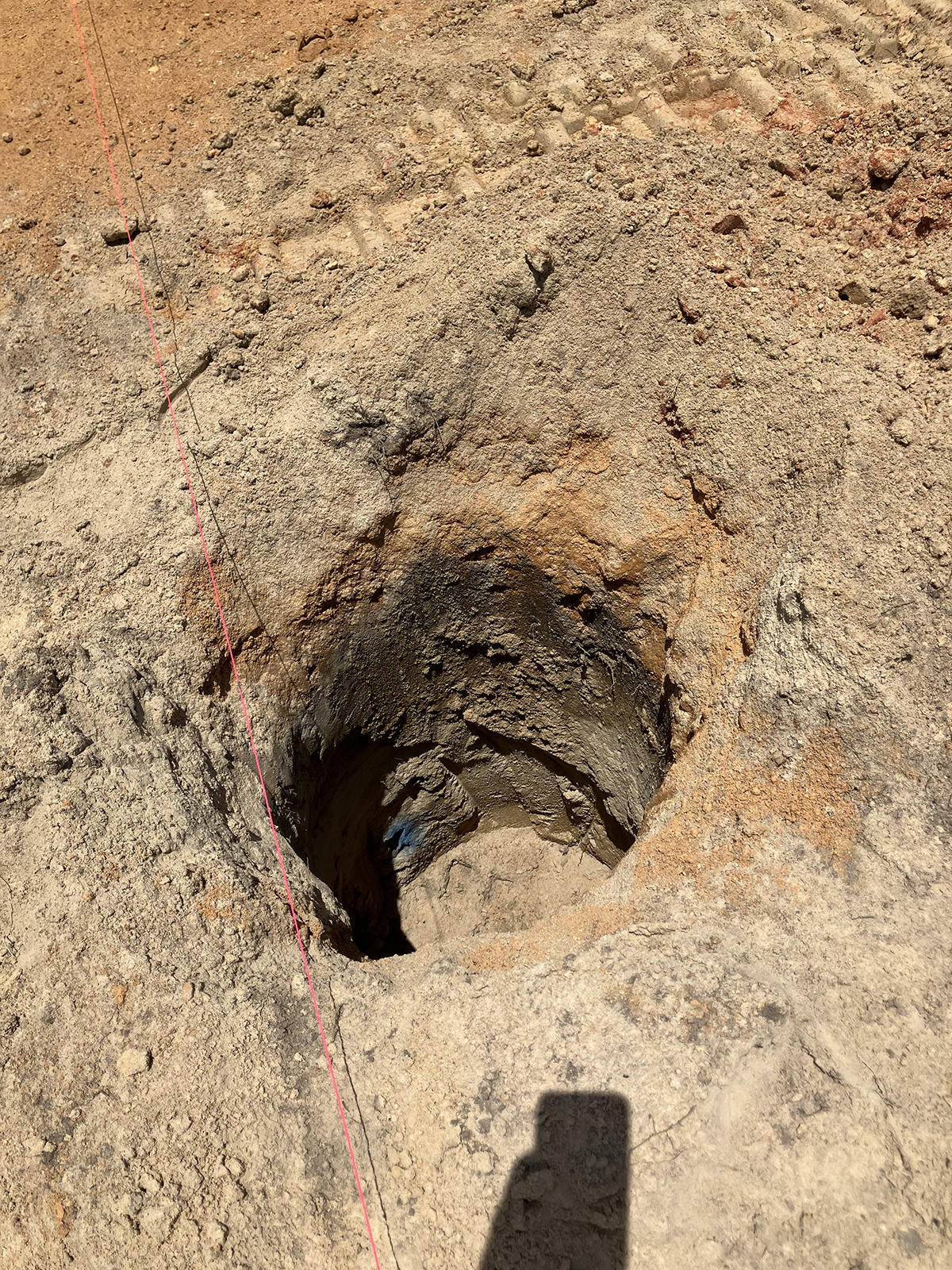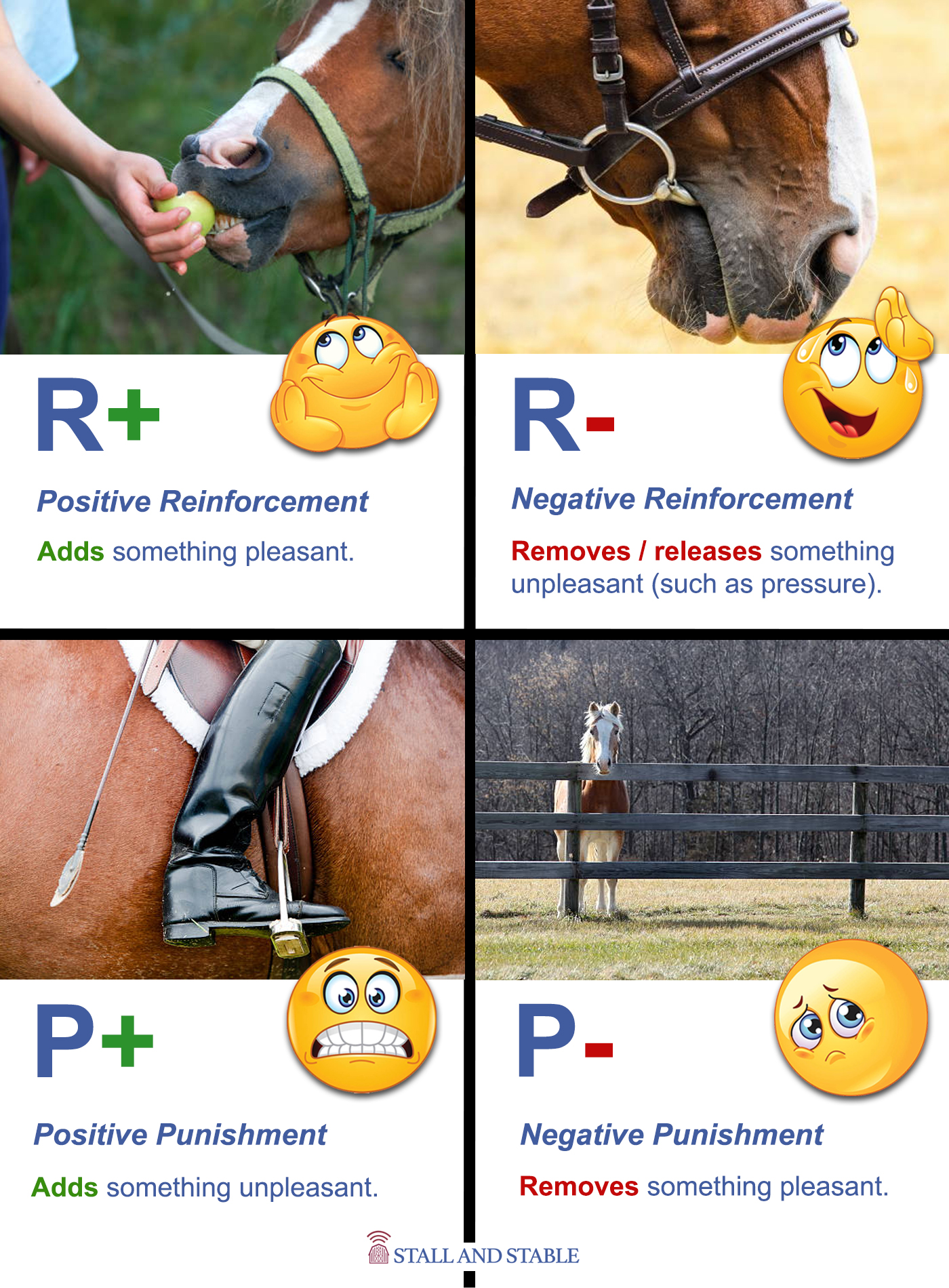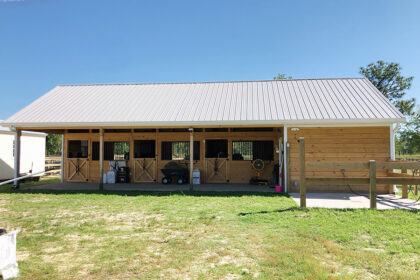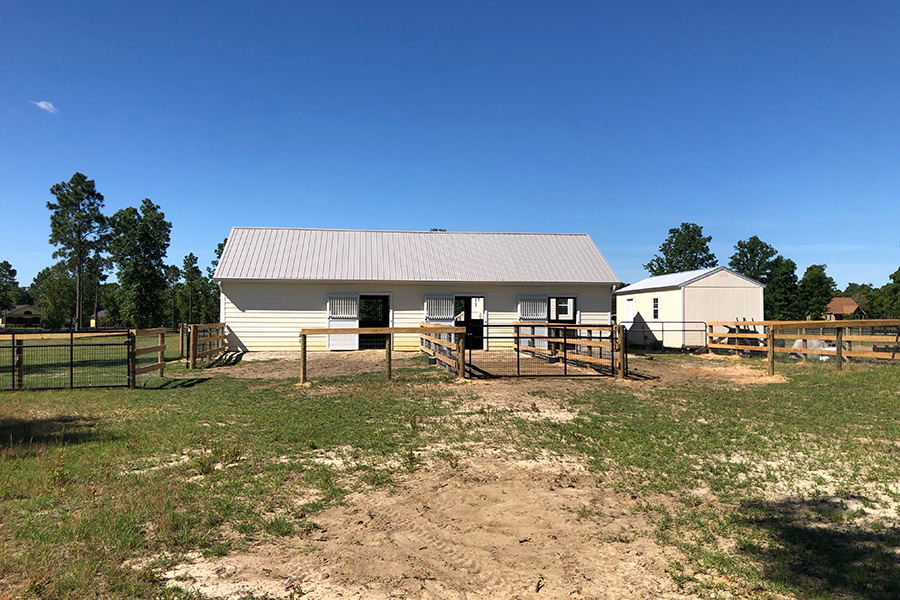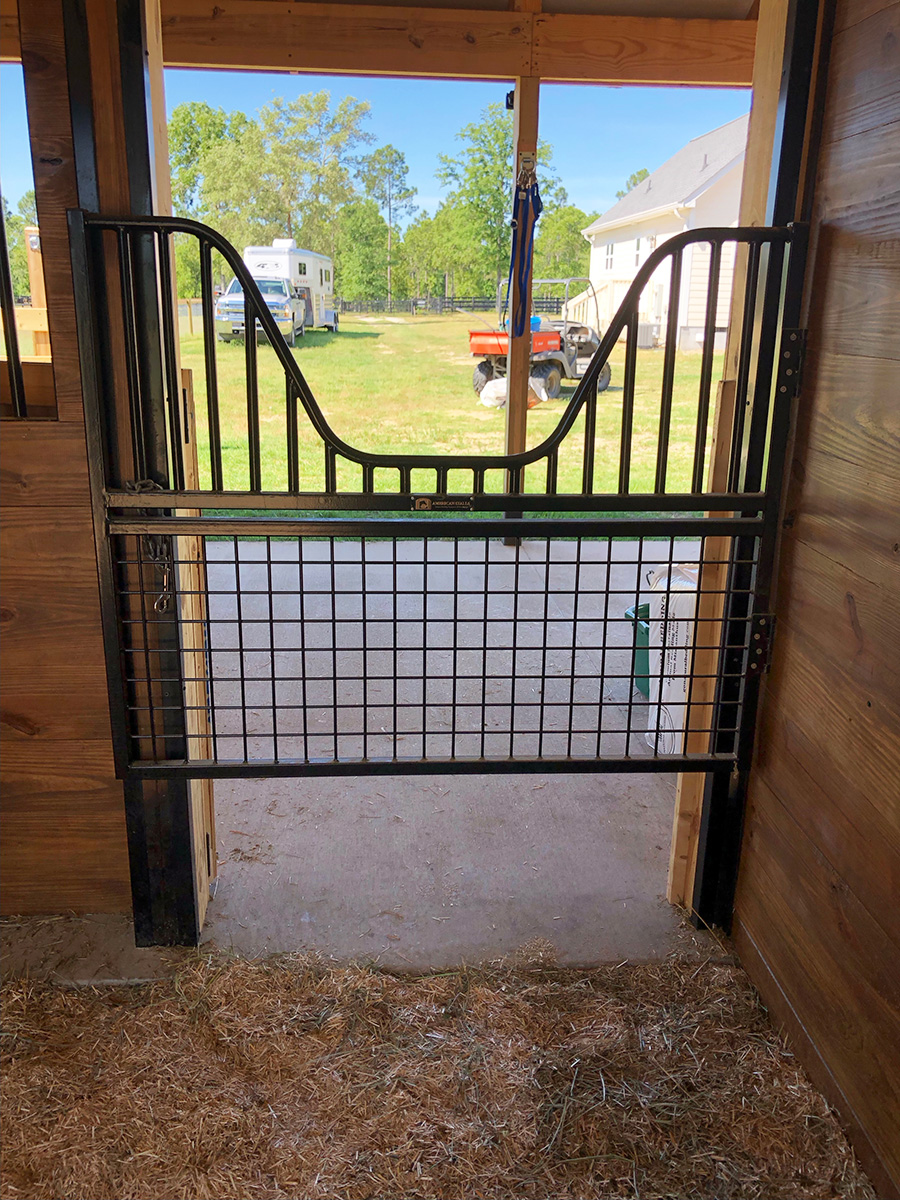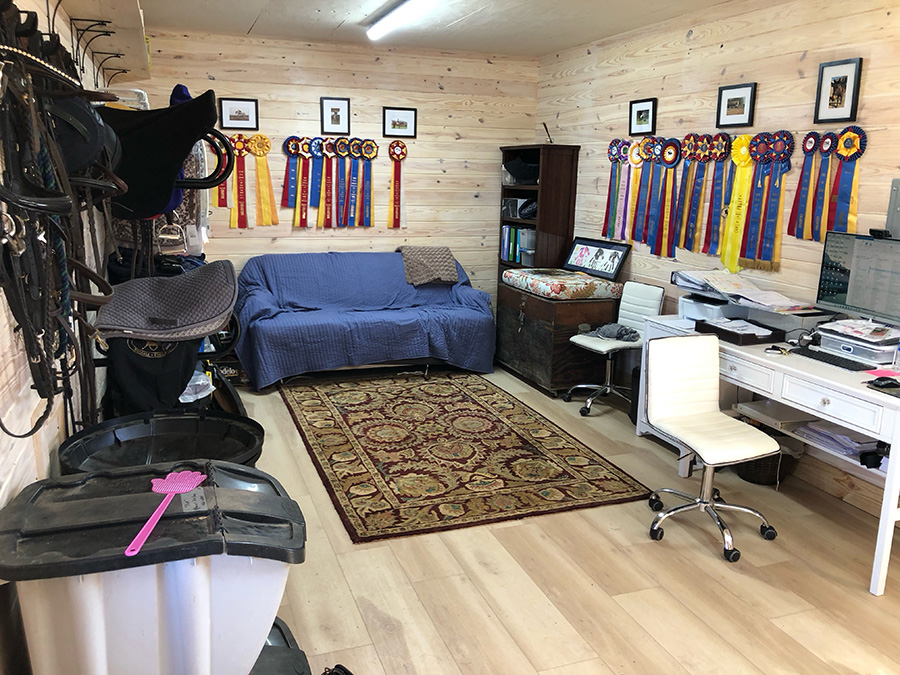It’s another Triple Crown Nutrition Spotlight episode, and this time, Helena and Stacy talk about how to choose a feed for those easy keepers, horses with metabolic issues and other situations where low sugar / low starch diets are necessary for healthy horsekeeping.
Plus, Helena shares an update on what’s happening at Hoo Too! There’s a brand new barn being built, the Hoo Crew is adapting to “summer in the South”, and Helena prepares for graduate school at UPenn. What?! Lots to digest here, people, so listen in! (Pun very much intended.)
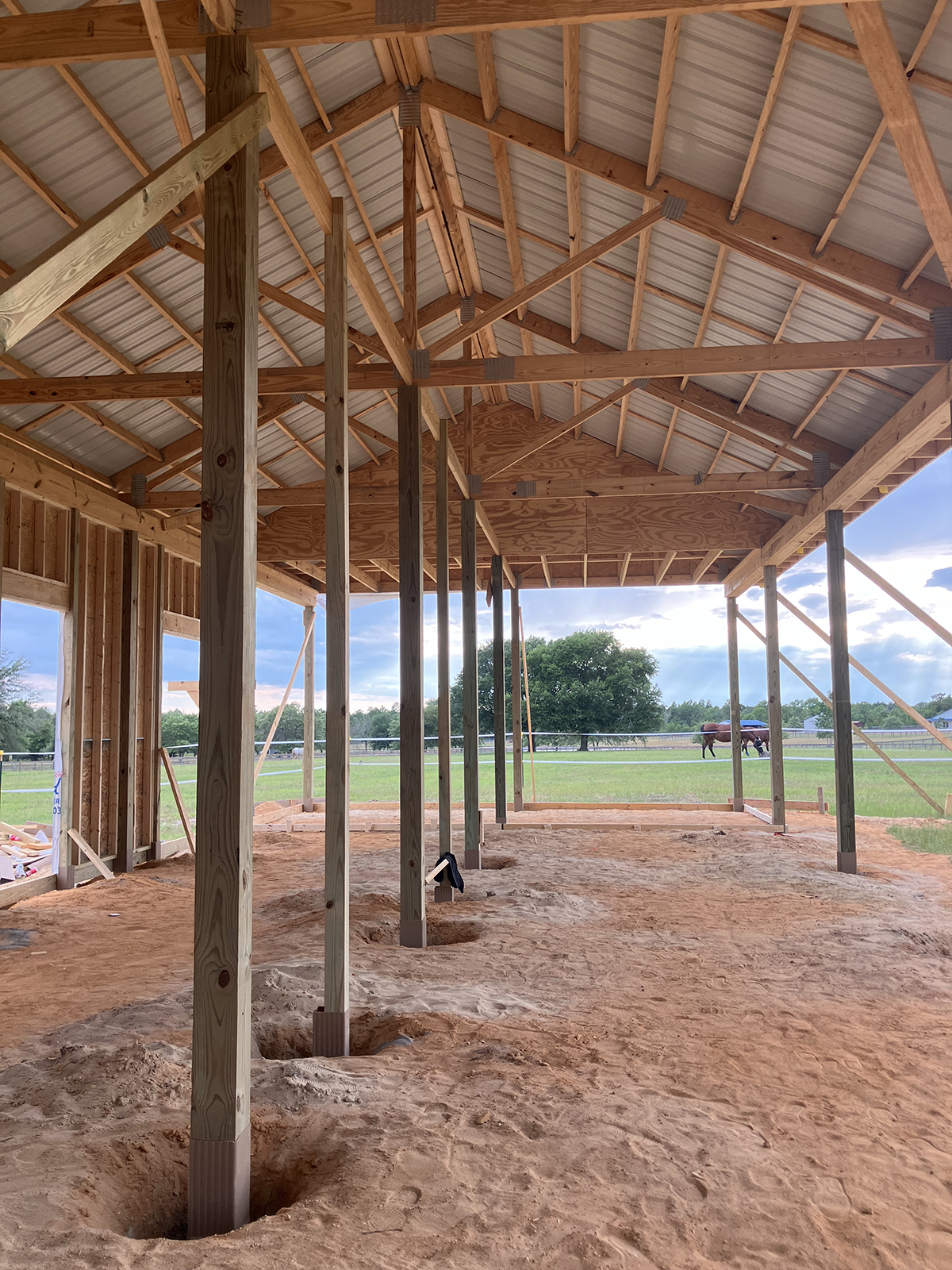
For more information:
Triple Crown Balancer | Balancer GOLD
This episode is made possible in part by AMERICAN STALLS, makers of premium quality stall components and accessories.
Episode Transcript
You’re listening to the Stall and Stable Show, Ideas for Happy Horse Keeping.
This episode features our special Triple Crown Nutrition Spotlight segment with equine nutrition specialist, Stacy Anderson.
The question asked and answered this time is a solitary one, but it dives deep into the decision-making process about choosing the right feed for metabolic equines.
Horses and donkeys with health conditions like equine metabolic syndrome, Cushing’s disease, and other health conditions that require a low-sugar, low-starch diet.
Plus, stick around for an update from me on the state of Hoo Too, the building of our new barn, my upcoming adventures in graduate school, and more.
So listen in.
This is episode 145 of the Stall and Stable Show, brought to you by American Stalls and Triple Crown Nutrition.
Today is Friday, June 28th, 2024.
I’m your host, Helena Harris.
Please support our sponsors as they help make this podcast possible.
You can find more about them at americanstalls.com and triplecrownfeed.com.
Welcome to another new episode of the Stall and Stable Show.
I want to get right into our conversation with Stacy Anderson from Triple Crown.
If this is something you want to pay attention to, you might even want to take notes.
So let’s talk to Stacy from Triple Crown Nutrition and learn about protein and feeds that are appropriate for horses that have or may have metabolic issues.
Hi, Stacy. Welcome back to the show.
Oh, thank you so much.
It’s great to be back again.
We have a detailed question that we’re going to go over this week.
And, you know, I love it because it’s my question as well.
I mean, although my horse isn’t exactly insulin resistant, he’s typey for it. And I’m always keeping one eye out on what his nutrition profile should look like.
So this week’s question is, it looks like Triple Crown Balancer, Balancer Gold, or Triple Crown Light would be good for my Easy Keeper, who has insulin resistance. How do I decide?
And why is the Balancer 30% protein, while the others are only 13.5% and 12%? Is that too much protein?
I have been waiting for a question like this because it allows me to digress into a couple of different topics that are kind of wrapped up in this.
I’m going to explain a little bit about what the nutritional guarantees on a feed mean, because it can be confusing for us if we don’t have a basis in equine nutrition.
We’re used to looking at human nutrition labels.
Looking at the feed tag for your horses can be a little overwhelming sometimes and hard to understand until you do the math.
I’ll just jump right into it.
The first thing is when feeding horses with metabolic concerns, you must focus on the big rocks.
What I mean by that is what actually makes the most difference in the horse’s dietary intake.
For an easy keeper who doesn’t really need a lot of feed, just needs maybe a ration balancer, the big rock is their forage, as it is with most horses.
You cannot cure a problem for an insulin-resistant horse with just a ration balancer.
You have to have the bulk of their diet, which is their forage, which is over 95% of what they’re eating, has to work for them, or just adding a balancer is not going to fit your situation.
The first thing I say to these folks is, is your forage correct for your horse?
I understand lots of people are in boarding situations where they have the forage that they can get.
If your barn or you brings in enough forage at a time that you have a couple months worth of the same cutting of forage, I would recommend having it tested to make sure that it meets the metabolic needs of your horse.
Generally, when we say that, we want it to be below 12% non-structural carbohydrate for horses that are kind of metabolic.
For horses that have had severe issues, we want that number below 10%.
Different people look at different carbohydrate numbers for that, and we can discuss that in a bit as well.
So number one, make sure your forage is correct.
So even before you decide which balancer or light feed you need, you must, for a horse like this, you must have your forage correct.
What about grasses?
Generally speaking, for an easy keeper who has insulin resistance, we usually recommend they be on a dry lot.
If they can’t be on a dry lot, then they probably need to be limited time on pasture, utilizing a grazing muzzle, and or looking into when is the best time in your area for your horse to be on pasture when the sugars may be the lowest.
And that’s a good question to have with your co-op or your extension office, because you can have your soil tested, but that doesn’t always give you specific information about how much sugar is in the grasses.
So that’s a little bit broader conversation to have with a local expert.
Absolutely.
And there is a great resource that you can look into that can help you identify when might be the safest times to have your horse on pasture.
Again, if you’ve had a horse with metabolic issue, if they’ve ever gotten sore or found that type of thing from being on pasture, I generally don’t let those horses out on pasture without a grazing muzzle.
And that’s if they’ve overcome it and you’re medicating them and their numbers are more stable, then they could be out possibly with a grazing muzzle.
Some horses are just so severe, they have to be on a dry lot.
And we’re building a barn right now, and it’s oriented so that a portion of the barn will open up into a dry lot, a sacrifice paddock, specifically for that reason.
Whether Brody ends up being insulin resistant or not, you never know what horse is going to require this type of restriction.
So it’s best practice to incorporate some sort of dry lot into your farm planning.
Okay, carry on.
Absolutely.
Okay, so now this person specifically asked about protein levels, and we’re concerned about the differences.
So with Triple Crown, we have three products that can essentially be used as a ration balancer.
If you haven’t heard us talk before about ration balancers, ration balancers are a concentrate of vitamins and minerals and some protein that you feed at a low level for horses who either aren’t getting enough feed to receive proper vitamin mineral or for horses who do, calorie-wise, do well on just their forages.
But you want to make sure to fill any nutritional gaps in for selenium, zinc, manganese, that type of thing.
Those are where a ration balancer or light-type feed fit in really well.
So when we’re looking at protein levels, oftentimes ration balancers are going to be close to 30% protein because you feed such a small amount.
The thing that gets a lot of us is, as humans, we’re used to looking at a nutrition label, picking up a peanut butter jar and seeing that that provides, say, 7% of our recommended daily protein intake.
That is not the case for horse feed labels.
So when it says 30% protein, it is not 30% of your horse’s daily value of protein.
It literally means that 30% of the composition of that product is protein.
So whether it’s one pellet that you hold up, 30% of that pellet is protein, whether it’s one pound of that feed that you hold up, 30% of that pound of feed is protein, or the whole 50-pound bag, 30% of that 50-pound bag consists of protein.
So what does that mean?
For most of us, that’s confusing because we’re geared towards human nutrition labels, and we all know even that is not super beneficial for us at times, right?
That’s based on an average human’s 2,000-calorie diet.
Crazy thing is horses range even more in terms of size, activity level, etc.
So we really can’t do a general recommended amount of protein for a horse on the feed label, like 30% of their daily recommended value, because horses can be 120 pounds, your little friend Minnie that’s hanging out.
They can be 2,500 pounds, your huge Percheron friend down the road.
So that’s a huge difference.
So I’ve made this complicated for you all maybe, and you’re like, whoa, gosh, I thought that meant 30% of the recommended protein.
It doesn’t.
But there is a simple way to convert that.
Anytime you see on a feed label an AFCO, the American Association of Feed Control Officials, that is the organization that puts together the rules as to what we have to put on a feed label and the values of which we have to put that on.
It is not the same for supplements.
Supplements are not guided under those same levels.
So when you purchase a supplement, it may or may not tell you how many milligrams of something are in a serving.
Also, be cautious with supplements because it may tell you how many milligrams per pound something is, but then you only feed two ounces of that supplement.
So you’re thinking you’re feeding a certain amount of milligrams of something, but you’re only feeding two ounces.
So you have to kind of watch that too.
Is the ration balancer considered a feed or a supplement?
That’s tough.
So we would consider it a feed only because it is in pelleted form, but it is essentially a daily supplement, the daily multivitamin, multimineral for the horse.
And then depending upon the company, they may add protein and amino acids, they may add digestive supplements, they may add electrolytes, that type of thing.
So every company is a little different as to what else they put into a ration balancer.
So when you’re looking at protein or when you’re looking at any percentage in a bag of feed, if you multiply the percentage, so let’s say the 30% ration balancer, by the number 4.54, so multiply percent by 4.54, that gives you how many grams of that nutrient are in each pound of that product.
So the Triple Crown 30% ration balancer is 30% protein times 4.54 is 136.2 grams of protein per pound.
We generally only want to feed a thousand pound horse, minimum one pound, maximum two pounds a day of a ration balancer.
And you may say, so we don’t have a, you know, us lay people, we don’t have sort of a sense of, well, how many grams of protein does a horse need per day?
Every horse is a little bit different depending upon their size, their activity level, et cetera.
In general, an average 1100 pound horse who is in light work or not really working at all, kind of hanging out, at a minimum need that those horses need about 630 grams of protein a day minimum.
At Triple Crown, we find that many horses do better on, that’s minimum level of protein.
We find horses do a little bit better on a higher level than that minimum.
So generally, we aim for horses in light work at about 1100 pounds.
We aim closer towards like 1200 grams of protein a day.
So that being said, most of a horse’s protein requirements, especially a horse that’s an easy keeper and getting enough calories from their forage, most of those horses are actually meeting their protein requirements from their forage alone.
Because even if your hay is only 10% protein, your horse is probably eating 18, 20 pounds of that a day.
So as you can see, the protein level of something that you’re only feeding one or two pounds of a day is not a significant portion of the protein in the horse’s diet.
For that reason, so when we look at the Triple Crown Balancer, that’s 30% protein, that’s 136 grams of protein.
Our Triple Crown Balancer Gold has a lower protein level because it does not include soy as the protein base.
So we use other ingredients to make up that protein.
So the Balancer Gold is 13.5% protein, which is 61 grams of protein per pound.
And our Triple Crown Light, which is 12% protein, is about 55 grams of protein per pound.
But you feed 2 pounds a day of Triple Crown Light instead of 1 pound per day of the Triple Crown Balancer.
So a lot of folks will call me and say, I don’t really want to feed the Balancer because it’s so high in protein.
I would rather feed the Triple Crown Light.
And I have to explain to them, well, with the light, you feed 2 pounds a day to reach proper vitamin and mineral.
So you’re actually feeding very similar amounts of grams of protein between feeding the light and feeding the Triple Crown Balancer.
With a 30%, you have to feed that much.
But with the light, you can sort of modify it down.
What’s the difference?
Why would you choose one versus the other then?
Great question. We get that question a lot.
So the balancer is, again, intended to provide NRC-recommended vitamin mineral at just one to two pounds per day for a thousand pound horse.
So very, very concentrated.
But we came up with the light because there are barns that have some horses that eat a lot of feed where then you have your easy keeper.
And we found sometimes like, while I’m giving my old 25 year old horse three quarts of feed, my poor little easy keeper that’s getting balancer only gets three little cups of feed a day.
And they give me stink eye and I feel terrible.
I feel terrible.
Oohhh, so it’s the stink eye product!
It’s the stink eye product. Yes. [laughter]
And so this is that is a very real obstacle to overcome.
And I mean that in the most genuine way because the humans are feeding these animals and they tug at our heartstrings.
And sometimes it is hard to not anthropomorphize.
Look at that little fatty staring back at you like, “I’m done? That’s it?”
You know, and food is love to a lot of us. It’s survival and it’s love.
And it’s very difficult for me anyway. It’s hard.
So this is the non-stink eye product. [laughter]
That is one of the reasons for Triple Crown Light, because you’d feel so bad because everybody else is getting a little more feed in their bucket and your easy keeper just gives you that sad look.
So the Light is essentially a ration balancer that has some low calorie, low carb fiber built into it.
So you feed a little more volume to get your vitamins and minerals so that makes you feel better, that makes the horse feel better.
The other nice thing about light is it does have a little bit more flexible feeding rate.
So it can be fed at two to four pounds per day for a thousand pound horse versus the one to two pounds per day for the balancers.
So if you’re in a situation where you do have smaller horses, minis, that ponies, that type of thing, and you have other folks feeding, sometimes choosing the light can be a little safer in terms of trying to prevent overdoing it for vitamin mineral if you have somebody else feeding for you because you can see a little more volume of the light than the balancer.
Not that you’re not going to hurt your horse by feeding more balancer, but you know, unless you’re feeding like bags and bags of it, like toxic levels, but it is, you know, anytime you over supplement a horse, their bodies have to work hard to remove those excess vitamin mineral.
Not only that, it’s not great for the environment to overdo vitamins and minerals as well.
I think this episode might be for me.
I think this episode might be for me.
Suzy is the only one who, I mean, I can feed her 10 times a day and she’ll always stay at the same worried mare weight, is what I call it.
And Brody and Clarabel, you know, they’re like a couple of Hoovers.
They’re like, oh, we love our Ration Balancer, but we’re bored. We’re waiting for Suzy to finish. And Suzy’s really slow.
And it gives me a little twist in my stomach, because I feel bad for the easy keepers.
But there’s also a behavior component and an efficiency component to this, because when you do have a horse who’s Hoovered through their morning feed, sometimes they kick, sometimes they get antsy.
So I’m actually going to look into this because I think that I might be your target market for this product. This is a very timely conversation to have.
Yeah, absolutely.
And the other really nice thing about Triple Crown Light is with our other two balancers, the original balancer and the balancer gold, like we said, those are very concentrated.
Most of the composition of those pellets is the vitamins, minerals, pre and probiotics, etc. without a whole lot of protein and carrier, you know, so to make the pellet to get them to eat it.
Everybody has that horse that is like super picky snob, doesn’t like their vitamins.
So sometimes for horses, like generally our balancers are very well received by most horses, but there are the ones that would just kind of like, that’s too vitamin-y for me.
The light, because it has a little more of that low carb, low calorie fiber built in, it masks the taste of the vitamins and minerals a little bit more than the balancers do.
So that’s another option where the light can be a good fit as a ration balancer, if that’s the type of horse that you have as well.
For our listeners who do not know what the gold designation is, how is the balancer gold different than the other two?
So a couple years back we came out with our Triple Crown Gold Line.
The differences with the gold balancer, our gold balancer is soy-free.
For many horses, that’s not necessarily a positive or a negative.
Many horses do wonderful on soy.
Soy is almost perfectly matches up for the horses’ limiting amino acid needs.
So for many horses, soy is actually a good ingredient.
But there are horses that are allergic or sensitive to soy.
There are folks who don’t want to feed soy for other reasons.
And so that’s where the balancer gold can be really helpful because it is a soy-free ration balancer.
The other benefits to the gold line are that we have included electrolytes.
And those electrolytes really help with heat stress tolerance for horses.
We would still recommend feeding an additional electrolyte on days that you need to replace sweat.
So if it was like super hot and humid or you had a really hard workout and your horse is just, you know, super wet, those days you would feed an extra electrolyte.
But in general, the balancer gold provides the proper amount of electrolytes to get the horse through a normal warm day, that kind of thing.
With the gold line, we also have an extra calcium sourced buffer.
So really great option for horses that may be prone to gastric ulcers.
With our gold line, the balancer gold includes that as well.
And finally, both of our balancers, we decided to include chromium.
So for metabolic horses, since that’s kind of what we’re talking about now, there is some evidence that chromium can help with blood sugar control in metabolic horses.
It also helps with heat stress as well, which is really pertinent because right now here in the East, we’re on like day four of 90 degrees plus.
Which for our early shoes.
We’re all looking into air conditioning for our barns and pools, and we bought a blow up pool for our horses.
Okay, so we’ve got Triple Crown Balancer, 30%, Balancer Gold, which has a different protein percentage as well.
So it’s not just Balancer 30% with all the extras that you talked about.
The actual protein ratio is different.
Yes, so the Balancer Gold, because we don’t use soy in that product, we had to look to alternative sources of amino acids.
And so what we went with with the Balancer Gold is alfalfa and some whey protein.
And because of doing that, in order to keep the amino acid balance correct and also properly balance the nutrition of that pellet, it does have a lower protein level.
However, as we discussed before, this is something that you’re only generally feeding about a pound or maybe two of a day.
And so most of your horse’s protein is coming from their forages.
So this just sort of complements that to make sure that we’re filling in any holes with amino acids to make sure that your horse is able to develop and retain muscle well.
In general, when looking between the Balancer, the Balancer Gold and Triple Crown Light, if your horse gives you stink eye or is really picky, sometimes the light is the best choice.
If your horse has ulcers, is it sensitive or allergic to soy, then the Balancer Gold would be the way to go.
If your horse is growing, breeding, lactating, I generally do recommend the original Balancer.
Granted, we’ve been talking about it’s not a whole lot more protein.
Most of the protein comes from the hay, but it does give more grams of protein per day.
So when your horse needs those extra, you know, grams of protein during those developmental stages, the original Balancer can be the best fit in that case.
However, if you have a young, growing horse that turns out that they’re allergic to soy, the Balancer Gold is an excellent option, and you could feed a little more Balancer Gold just to bump the protein up if that is something that you need if your forage is kind of lower in protein too.
So in sum, how do you choose?
One, make sure your forage is correct.
If your forage is not correct, let’s say you test your forage, it comes back at 14% ESC plus starch, and you have a metabolic insulin-resistant horse, that’s not working.
So you either have to soak your forage, get a different forage like Triple Crown Safe Starch Forage, and in that case, if you’re feeding the proper amount of Safe Starch Forage, you don’t need a ration balancer because it’s already included in the Safe Starch Forage.
Our Safe Starch Forage is 10% or less NSE, so that’s an option.
If you have proper forage, if your forage tests out correctly, then again, you kind of go through.
Do you have a horse that gives you stink eye and you need to feed a little more volume?
Then Triple Crown lights the way to go.
Do you have a horse that is prone to ulcers and heat stress and that type of thing, maybe anhydrosis, so they’re not sweating appropriately?
In those cases, the balancer gold is the way to go.
And for young, growing horses, lactating, breeding, original balancer for the slightly higher amount of grams of protein that you’re going to be feeding per day is the way to go.
Any horses that don’t fit into those categories that I’ve sort of mentioned, those special categories, any of these three products are absolutely perfect as long as your hay is correct.
Okay.
Our next episode is going to be how to figure out correct hay.
Because, and yeah, I mean, that’s, you know, that’s the hump we have to get over.
And especially now, you know, we’re all kind of waiting for the first cutting or, and testing.
And if you’re in a big barn, those guys go through hay so fast, they can’t always replace one load with a load from the same farm.
So it can be hard to test, but you get a general idea.
And there are rules of thumb about first cuttings and second cuttings and, you know, what has higher sugar.
And then there’s always the dry lot and grazing muzzles.
Stacy, where can people find out more if they have questions about this?
Because I have more questions about it.
Where can we go to read on our own time and then maybe get a little extra support if we need it?
You can always contact us at Triple Crown either at the 800 number or through our online form on our website.
Also, if you go to triplecrownfeed.com and you go to, I think there’s like some articles on horses, there’s actually a tool in there for converting.
So you can convert any of the percentages on your feed or supplement labels to parts per million, grams per pound, that type of thing.
So that’s a nice way to convert if you’re looking to be feeding a certain amount of specific nutrients.
You can go there and find that.
And I can send you the link to that too for the show notes so that folks don’t have to dig around on our website.
But we are absolutely happy to help and we have some tools available on our website as well.
Great.
And I will be sure to post those links at stallandstable.com in this episode’s show notes so you can go there.
Just remember stallandstable.com.
Keep it easy and we’ll link you over to all these tools that Stacy mentioned.
Stacy Anderson, thank you so much for this Triple Crown Nutrition Spotlight.
We will have you back on again next month.
Oh, wonderful.
Thank you so much.
Glad to be here.
And now it’s time for a little update from Hoo Too.
As I mentioned in my last episode, we have a lot going on here. So I will give you the summary. And then hopefully Buck and I will be able to record a couple of episodes where we can dive deeper into some of these topics.
Because like I said, we have a lot going on.
So here we go.
Number one, we’re building a barn.
We have decided to do a 60 by 24 foot footprint. It will have three stalls with a grooming stall or grooming bay. That’s 12 by 24. That will be multipurpose. It’s going to hold two weeks worth of hay. And then the rest of the space is going to be available for grooming and tacking.
It’s going to have a 12 by 24 tack and feed room. And then three 12 by 12 stalls with a 12 foot overhang, sometimes called a lean to.
Now there are details about this barn that are very specific that are specific to South Carolina summers. And there are design and feature considerations that are specific to the property and the opposite of what you’re going to face in Northern climates.
It’s really interesting. I’ve learned a ton and I can’t wait to share it all with you.
So the barn is under construction. It is a pole barn. It’s stick built. So that’s underway.
Some of you may have been following our Facebook and Instagram pages, and you’ll see some photos that track the progress as it happens.
The horses are doing well. We’ve all adapted to the southern heat.
However, last week we had record temperatures. That is not just for South Carolina or the southeast of the US. Those numbers are directly related to the planet warming up.
Now, if you want to come at me about climate change, bring it on.
Thirty years ago when I graduated with a degree in environmental studies, we were talking about this, we were talking about it in a big way, and yeah, it’s here. So, triple digits, definitely tough to be a human being. It might have been a little less tough to be a horse, as long as the horse isn’t being worked.
We had 102 here the other day, and the number was scarier than the actual temperatures outside, to be honest. And like I said, my horses are out there, it’s 102, the sun is beaming directly on their bodies, and they’re just grazing away.
There are some things that I’ve learned from locals, how to keep your horses cool, what to do when, I’m also observing their behavior, getting an idea of when they need relief.
Honestly, the fact that the horses can come and go into the existing run-in shed that we have now, is the most important thing.
They can choose when they need extra comfort, when they need shade, when they need relief from the bugs.
We don’t have power or water in that run-in shed, which is very challenging, so we went out to Home Depot and we bought a bunch of extension cords, outdoor rated extension cords, and I hung up two industrial fans.
These are outdoor ag-approved fans, and I hung them up, really not so much to provide any cooling effect, but simply to give the horses relief from the gnats.
We do have gnats, not so much biting flies, not mosquitoes, even the horse flies are very rare. The gnats are the big issue. So those fans provide tremendous relief to the horses.
Let’s see, what else?
Once the extreme heat of the day is, you know, once you get over the hump, which is much, much later in the day here than it is in New England. Up north, the hottest part of the day is right around noon, 1 o’clock. Here, it’s 5 o’clock.
So, you know, watching the trajectory of the sun, knowing when the hottest part of the day is, all of these things, plus observing my three horses behavior, this is all giving me information about how to take care of them.
You know, horse keeping is very different here.
There’s so much to cover from the soil to the wind to the sun to the space that they need.
We’re going to cover it.
Needless to say, we’re really looking forward to having the barn done because it does provide a lot of comfort in terms of relief from the sun, capturing the breezes for all of us.
Let’s see what else.
Oh, the other big news, which you may or may not have heard, is that I was accepted into the University of Pennsylvania’s veterinary school. So UPenn is the university, PennVet is their vet school. PennVet has a graduate program in animal welfare and behavior, and I’m going to be pursuing a master’s degree in that.
I could continue on if I want to with their Ph.D. program. Not sure about that, though.
My brain is on fire with ideas and hope and possibilities with this program. And I’m trying to keep myself like just, as Maria says, just sit chilly, Helena.
Just sit chilly.
And I’m making notes about how I want to save the world, how I want to change the horse world. But I really need to just sit chilly and dive into the science of animal behavior, animal welfare.
Many different species will be going over many different species. But of course, horses are the one that I’m going to focus on when all is said and done.
I’m grateful that UPenn has this program and that I got in. Growing up, I wasn’t the best student, honestly. But of course, I had ADHD, which was undiagnosed. Looking back on my academic life, no wonder! So getting into an Ivy League school is an accomplishment that I never, ever, ever thought possible. I feel like I’m 19 years old again, and I’m so very honored to be a part of the UPenn world.
And let’s see what else.
Yes, Maria Falgione will be back. She’ll be weaving in and out of here.
You know, this is me flying by the seat of my pants. So you guys are along for the journey.
And I have to tell you, I am so, so grateful for listeners, for you guys, for tuning in, for respecting the work that I do when I have accomplishments, when I open myself up.
I mean, I am as transparent as they come, sometimes to a fault.
I don’t know what the word is that I’m looking for.
I’m just really grateful for your continued support and presence.
And I’m so grateful to American Stalls, Triple Crown Feed, and Barn Pros for believing in what Stall and Stable is about.
Happy horsekeeping is so important.
I mean, it’s not just about animal welfare. It’s not just about horses who are not running up their vet bills. Who we are as horsewomen is who we are as humans. And who we are as humans is so important for keeping our horses humanely, keeping them happy, keeping them healthy, and for having fun.
We want to do stuff with our horses. We want to ride them, we want to have fun, and that’s okay. So I try to weave all of that into Stall and Stable, and I know it can be a bit much at times.
So I just want to say thank you for being interested, thank you for being invested, and thank you for being open-minded.
And that’s going to be a wrap for this episode.
I hope you enjoyed it.
